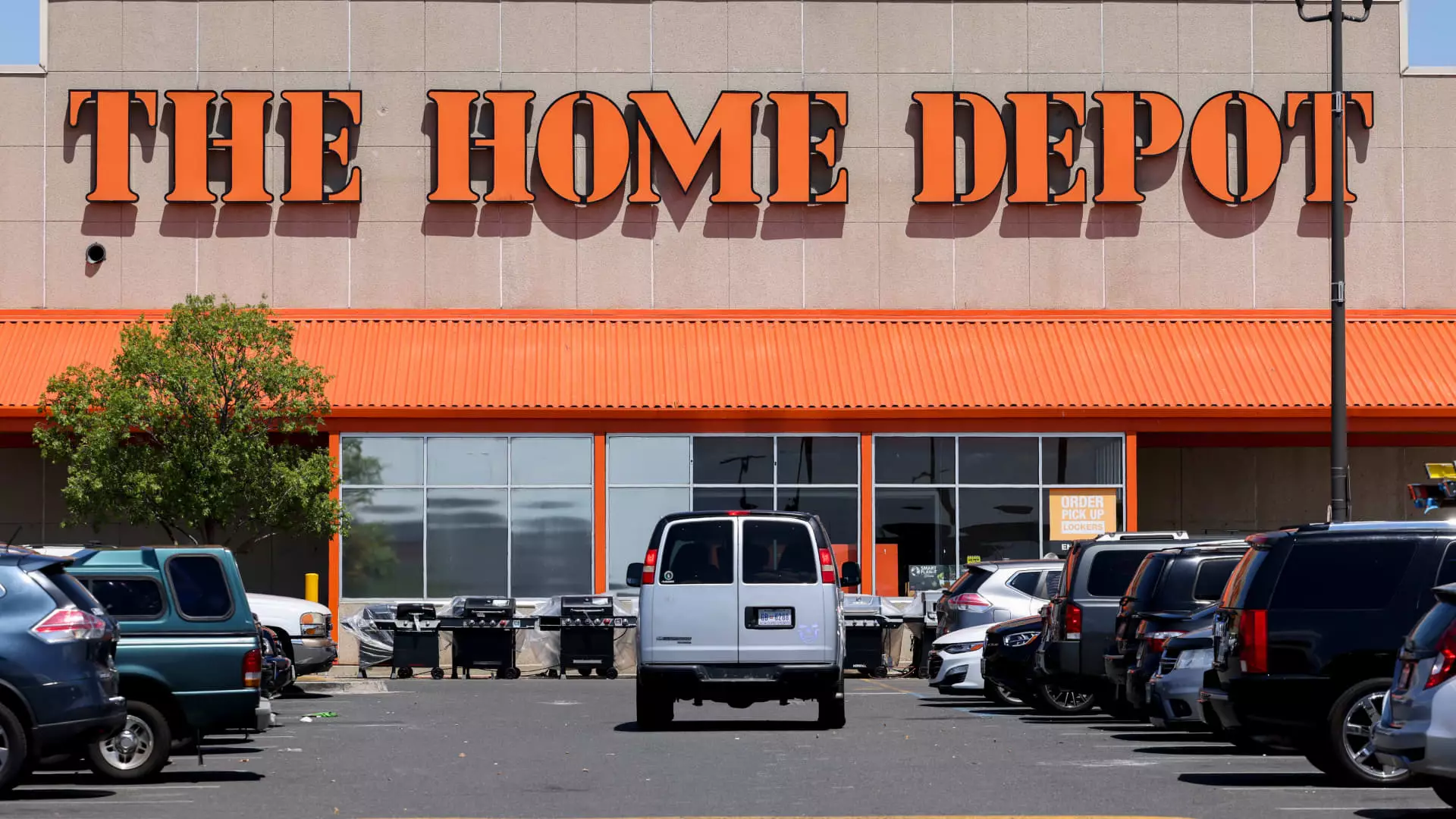The retail sector is often seen as a bellwether for economic health, with companies like Home Depot and Best Buy serving as key players within this domain. Recent analyses from Wall Street have provided a juxtaposed outlook on these two retail giants, highlighting optimism for Home Depot while casting doubt on Best Buy. This article delves into the nuances of these assessments, exploring the driving factors behind investor sentiment and how each company’s strategic positioning plays into the larger economic narrative.
Analysts from Telsey Advisory Group have upgraded Home Depot’s stock to a ‘buy’ rating, raising the price target from $360 to $455 per share. This upward adjustment signals a projected upside of nearly 14% based on recent market performance. The company is set to release its third-quarter results imminently, and while analysts anticipate a “continued softness” in sales due to potentially challenging economic conditions, they project robust earnings and revenue growth by 2025.
Key factors driving this optimism include declining mortgage rates and ongoing recovery efforts from natural disasters, which are expected to bolster sales. Also noteworthy is the anticipated easing of comparisons due to the high demand experienced during the post-pandemic period. Analysts point to Home Depot’s solid fundamental business model as a significant factor behind its expected market share growth in the home improvement sector. The company’s professional segment, which targets larger, more intricate projects, is also poised for growth, suggesting a broader expansion in operational capacity.
The current economic climate has illustrated resilience amid moderating inflation rates. The recent reduction of interest rates by the Federal Reserve is poised to contribute positively to the housing market. Home Depot stands to benefit significantly, as new homeowners undertaking renovation projects will likely turn to the retailer for their material needs. Following the quick resolution of political uncertainties surrounding the presidential election, Home Depot’s stock saw a spike of over 2.5%, reinforcing positive investor sentiment. However, this positive trajectory follows a tumultuous period characterized by disappointing earnings and forecasts that temporarily skewed market perceptions.
Jim Cramer has been vocal in highlighting Home Depot as a key beneficiary of the Federal Reserve’s easing measures, advocating patience for investors as the housing market adjusts to the changing interest rate landscape. While he concedes that forthcoming earnings reports may not reflect extraordinary growth, the true value will lie in the outlook that these reports provide, particularly regarding guidance for future quarters.
In contrast, Best Buy is facing a more precarious situation. Analysts at Citi have reduced the price target for Best Buy’s stock from $115 to $109, yet maintained a ‘buy’ rating. This cautious stance stems from apprehensions surrounding the potential impact of tariffs on imports, particularly from China, as the new political administration looks to implement stricter economic policies. Given Best Buy’s significant exposure to these imports for its electronic goods, any tariffs enacted could hinder profitability and operational efficiency.
Despite these headwinds, Citi analysts emphasize the continued viability of a technology-driven replacement cycle that is inherently beneficial to Best Buy. With consumers increasingly drawn to upgrading their devices—especially in the realm of artificial intelligence—Best Buy is positioned to capture sales in this evolving market. The immediate effects of any potential tariffs are tempered by this enduring trend, provided the retailer can leverage its brand strength effectively.
The Dichotomy of Two Retail Giants
Best Buy’s stock performance has shown vulnerability in recent weeks, with shares down nearly 2.5%. The broader implications of economic maneuvers, such as the Federal Reserve’s monetary policies, are set to impact consumer spending habits significantly. Should interest rates decline further, it could catalyze a resurgence in home sales, subsequently boosting demand for larger appliances and electronic goods—a segment in which Best Buy thrives.
As both companies prepare to release earnings reports, the investor focus will likely pivot towards evaluating how external economic factors will influence future growth trajectories. For Home Depot, engagement with the housing and home improvement sectors offers a buffer against market fluctuations. For Best Buy, success hinges on navigating external risks while capitalizing on consumer tendencies towards technological upgrades and replacements.
While Home Depot emerges with a clear path towards growth in an evolving economic landscape, Best Buy faces challenges that could impede its performance. Navigating a complex environment calls for strategic foresight on both fronts. Investors will need to remain vigilant, assessing how these dynamics unfold in the coming months as both companies strive to adapt and thrive amidst ongoing economic transformations. As the retail sector continues to evolve, it will be crucial for both Home Depot and Best Buy to align their strategies effectively with emerging market demands and economic realities.

